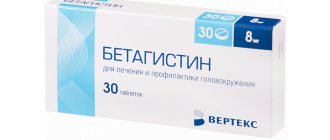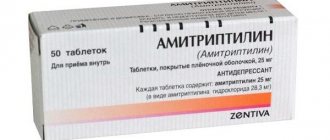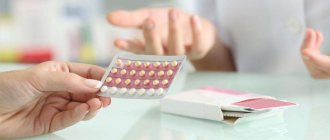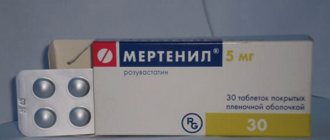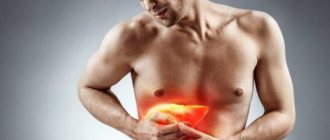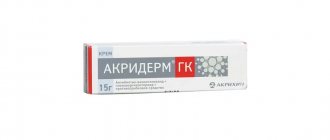"Solcoseryl" is a modern drug used mainly to accelerate regeneration processes. The main advantage of this medication is that it can very effectively increase the ability of tissues to heal themselves. However, this medicine, like any other drug, has contraindications. In addition, this medicine is not always sold in pharmacies. In some cases, analogues and substitutes can be used instead of Solcoseryl. There are quite a lot of medications in this group on sale today. And most of them are considered quite effective.
Description of "Solcoseryl"
Actually, this medicine itself can be produced in the form of a gel, ointment or solution for injection. Its active substance is produced from the blood of calves by deproteinization. Upon contact with skin or tissues, Solcoseryl ointment accelerates the transfer of oxygen to cells, promotes the synthesis of collagen and ATP, stimulates aerobic glycolysis and oxidative phosphorylation.
The medicine "Solcoseryl" is prescribed to patients with the following diseases:
- hemorrhoids and varicose veins;
- dysfunction of the brain;
- diabetes mellitus;
- trophic ulcers;
- damage to the cornea of the eyes;
- stomatitis.
Wounds (mostly only immediately after their appearance and not soaking), burns and scratches are also something that can be treated with the use of the drug "Solcoseryl". Analogs of this drug are also often used for these purposes. Intravenously, this medication, since it can improve blood circulation, is usually prescribed to patients with strokes.
Solcoseryl ointment: instructions and application diagram
Pharmacological action of the drug - as we said above: the active substance of the ointment is deproteinized (devoid of protein) hemodialysate, which contains a spectrum of low-molecular components of cell mass and blood serum of dairy calves. Clinical studies have shown that thanks to this composition, Solcoseryl ointment has a wound-healing, regenerating, antihypoxic, membrane-stabilizing, angioprotective, and cytoprotective effect on damaged tissues.
In simple terms, this means that the drug has the following properties -
- accelerates wound healing (by about 30%),
- stimulates the proliferation of fibroblasts responsible for collagen synthesis,
- stimulates collagen synthesis in young growing tissues,
- activates metabolic processes in cells (increases oxygen consumption by cells, stimulates the transport of glucose into cells), which together allows damaged cells of the body to regenerate and recover faster.
Solcoseryl ointment: official instructions for use (download in PDF)
Scheme and features of application –
Solcoseryl ointment should be applied in a thin layer directly to the wound surface 2-3 times a day. Before applying the ointment to the wound, it is necessary to treat it with an antiseptic solution using a clean gauze swab moistened with an antiseptic solution. After this, you need to wait until the wound dries and apply ointment. As antiseptics, you can use 3% hydrogen peroxide or antiseptic solutions -
- Chlorhexidine solution,
- Miramistin solution.
Important : remember that you should not apply the ointment to infected wounds, as well as fresh wounds with wet discharge! For wet wounds, Solcoseryl gel can be used, and after the wound dries and becomes covered with granulations or crusts, you can already switch to the ointment form of Solcoseryl. The latter, in addition, contains fatty components that will form a protective film on the wound surface (24stoma.ru).
After applying the ointment (if necessary), the wound can be covered with a gauze bandage. The use of the ointment should continue until its complete epithelization. If the healing of the wound has occurred with the formation of scar tissue, then in order to reduce the scar and make it more elastic, it makes sense to immediately start using a special cream for scars and scars.
Contraindications and side effects
You cannot use Solcoseryl ointment:
- people with intolerance to its components;
- pregnant and lactating women;
- children under 18 years of age.
Side effects of this medicine may include:
- cardiopalmus;
- skin rash;
- loss of attention.
Instructions for use
Solcoseryl ointment is used directly at the site of injury. The therapeutic effect when using it is achieved by rubbing a few milligrams into the affected area with your fingertips in a circular motion. Specific dosages, the number of uses per day and the duration of the course depend on the specific disease and are prescribed by the doctor individually.
Before using the medicine, the affected area of skin must be cleaned and disinfected. The course of treatment using this ointment usually lasts two weeks. If no improvement is observed after this period, the patient should consult a doctor for advice. The lack of effect in this case may be a sign of the presence of a benign or malignant formation.
Directions for use and dosage
The drug is intended for local use on the oral mucosa.
The affected surface of the mucous membrane must first be dried with a cotton or gauze swab. Apply a strip of paste about 0.5 cm long, without rubbing, onto the mucous membrane in a thin layer with your finger or using a cotton swab, and then lightly moisten the applied paste with water. The procedure is repeated 3-5 times a day after meals and before bedtime. Treatment is carried out until symptoms disappear.
Solcoseryl dental adhesive paste forms a protective therapeutic layer on the affected area of the oral mucosa and protects it from mechanical and chemical damage for 3-5 hours. When applying the paste to undried mucosa, the duration of the therapeutic effect can be reduced.
When treating bedsores from removable dentures, apply the paste to a dry denture and moisten with water.
The recommended course dose of the drug is 1 tube (5 g).
Reviews
This is the instruction for the drug “Solcoseryl”. Analogues of this medicine are numerous, but in the form of ointments they are usually used in the same way. The advantages of this medicine are primarily attributed by patients to its effectiveness and relatively low cost. According to many consumers, it heals wounds quite well. However, some patients are still not advised to use it. The fact is that this drug belongs to a group of little-studied medications. In some countries it is even banned.
special instructions
You should not put Solcoseryl dental adhesive paste into the wound cavity formed as a result of the removal of molars, wisdom teeth, as well as apicotomy (resection of the apex of the tooth), if the edges of the tooth socket are tightened with subsequent sutures.
Solcoseryl dental adhesive paste does not contain anti-infective components. In case of acute infection of the affected area of the oral mucosa, which is subject to treatment with this drug, it is necessary to carry out preliminary medical treatment/treatment of the affected area aimed at eliminating the symptoms of inflammation.
Medicine "Actovegin": description
This drug is, in fact, not an analogue, but a synonym for Solcoseryl. The instructions for use are almost the same as for Solcoseryl. The price (analogs in the form of ointment for this drug are often cheaper) is slightly lower in pharmacies. The main active ingredient in it is the same - the blood of calves processed in a special way. Like Solcoseryl ointment, Actovegin improves blood circulation and promotes regeneration. It is available in the same forms, as well as in tablets.
There is no particular difference between these two drugs. The only thing is that Solcoseryl is more often used for external use. Doctors prescribe Actovegin mainly intravenously. Stroke is often treated with this medicine. Like Solcoseryl, this analogue is not prescribed to pregnant women and children under 18 years of age.
Solcoseryl dental paste – price, composition and analogues
The cost of this drug has increased significantly by the end of 2022 and, frankly, the increase is completely inadequate. As a practicing doctor, I don’t quite understand how a drug with the simplest composition can be so expensive. For Solcoseryl dental adhesive paste, the price in Russian pharmacies will be on average from 1600 to 2000 rubles, although in neighboring Poland its price is only 800 rubles (prices are indicated for October 2022).
Composition of the drug: (the paste is available in aluminum tubes of only 5 g).
| 1 g of paste contains - → deproteinized dialysate from the blood of healthy dairy calves, → polidocanol 600. | 2.125 mg 10 mg |
| Excipients - carboxymethylcellulose, peppermint oil, menthol, gelatin, pectin, liquid paraffin, polyethylene 350000, preservatives - methyl parahydroxybenzoate (E218) and propyl parahydroxybenzoate (E216), as well as a residual amount of parahydroxybenzoic acid (E 210). |
Solcoseryl dental paste: official instructions ()
Composition analysis - the main component of the drug Solcoseryl Denta is deproteinized (devoid of proteins) dialysate from the blood of dairy calves. The dialysate contains a large number of low molecular weight organic compounds - amino acids, oligopeptides and glycolipids, nucleosides, etc., which significantly accelerate the healing processes of damaged tissues. Polidocanol-600 has an analgesic effect, which is felt within 2-3 minutes after applying the paste and lasts about 3-5 hours).
Paying attention to the auxiliary components, it must be said that carboxymethylcellulose, gelatin, pectin, liquid paraffin and polyethylene are the basis of the paste, and these components allow it to adhere well to the moist mucous membrane of the oral cavity and not be washed off with saliva. People with allergies to parabens (a certain type of preservative) should pay attention to the small content of parahydroxybenzoic acid.
Cheaper analogues -
Today, Solcoseryl dental adhesive paste has no direct analogues. There are drugs with a similar effect, but a completely different composition. For example, to accelerate the regeneration of the oral mucosa, gum gels containing hyaluronic acid are suitable for you:
- Curasept “ADS 350 Regenerative” gel is a very interesting oral gel from the Swiss. Due to the content of 0.5% chlorhexidine, the gel has an antiseptic effect, and thanks to hyaluronic acid, it has a wound healing effect. This gel also contains the PVP-VA complex, which forms a protective film on wound surfaces and ulcers, accelerating their healing. The price for Curasept ADS 350 Regenerative will be about 650 rubles (for a 30 ml tube), but be careful when purchasing, because in the Curasept line there is a gel with a similar name and without hyaluronic acid.
- Oral gel "GengiGel" (GengiGel) is a gel for the mucous membrane of the gums and oral cavity, which contains 0.2% hyaluronic acid, as well as xylitol. We have already said above that hyaluronic acid has a wound-healing effect. Unfortunately, this drug costs much more than the previous one, and its concentration of hyaluronic acid is much lower.
Reviews about "Actovegin"
Many patients simply avoid this drug, like Solcoseryl itself. It also applies to medications with an unproven therapeutic effect. There is also an opinion that a patient can become infected with mad cow disease through this analogue of Solcoseryl. However, those people who have used this tool often speak positively about it. Patients mainly praise Actovegin ointment. According to many patients, it helps with wounds and scratches very well. Some even call it a real “salvation.”
However, there are also negative reviews about this drug. This mainly applies to intravenous solutions and tablets. Some patients experience headaches or severe diarrhea after using these forms of the drug. There is also evidence that people sometimes die after injections of this drug.
At the moment, Actovegin, like Solcoseryl, is banned in many countries. Those who decide to be treated using this drug, of course, should know about this.
"Deoxynate": description
This analogue of "Solcoseryl" is available in the form of solutions for external use, local or intravenous. It belongs to the group of immunomodulators. Like Solcoseryl, this medication can be used for:
- trophic ulcers;
- stomatitis.
It is not used to treat wounds. But at the same time, “Deoxynate” is often used when the integrity of the mucous membranes is violated. This medicine is made on the basis of sodium deoxyribonucleate and, unlike Actovegin and Solcoseryl, it can be used by pregnant women and children from the first day of life.
Solcoseryl anti-wrinkle ointment: reviews
Sometimes patients use Solcoseryl facial ointment for cosmetic purposes to get rid of wrinkles.
The logic here is clear - since the drug increases the proliferation and activity of fibroblasts and leads to an increase in collagen production in damaged skin tissues (in wounds), then its regular use should probably lead to an increase in collagen production in healthy, undamaged skin. However, when using Solcoseryl ointment for wrinkles, reviews from cosmetologists indicate the absence of an anti-aging effect. The fact is that the drug affects the production of collagen and the proliferation of fibroblasts exclusively where the skin tissue has been damaged. As soon as the process of tissue restoration ends (and the young granulation tissue that has arisen at the site of damage turns into mature connective tissue), the effect of the drug stops.
However, long-term use of Solcoseryl ointment for the face (given the content of a fatty substance in it) can moisturize the skin, making it a little more elastic. But this does not occur due to an increase in collagen content, but due to a fatty film on the surface of the skin, which prevents the evaporation of moisture and therefore makes the skin a little more hydrated. At the same time, in patients with acne, the ointment can also cause an exacerbation of acne and pimples (due to the Vaseline content).
To stimulate collagen production in aging skin, the following 2 types of products are most effective (for arguments and clinical studies, see the links below) –
- products with retinoids,
- fractional lasers.
Recommendation: if you are looking for a cream both to improve skin regeneration and to significantly increase its hydration, a good option would be the “Bepanthen for dry skin” cream. It contains 5% dexpanthenol (a precursor to vitamin B5, which enhances regeneration), as well as well-moisturizing components such as the emollient “lanolin” + “D, L-pantolactone”. Apply 2 times a day, including on the moving parts of the eyelids. After a single application, moisture remains throughout the day. The cost is only 950 rubles per 100 ml tube.
The drug "Apropol": description
This medication is made on the basis of propolis. This analogue of Solcoseryl can be supplied to pharmacies in the form of tinctures, emulsions, ointments, aerosols and inhalations. The only contraindication to its use, unlike many other substitutes, is hypersensitivity. It has antimicrobial, anti-inflammatory, regenerating and analgesic effects on the skin, mucous membranes and tissues.
You can replace Solcoseryl with this analogue, for example, for the treatment of wounds. It is also used for trophic ulcers, scratches and stomatitis. For Apropol ointment, instructions for use are approximately the same as for Solcoseryl. Analogs in this form are, of course, most convenient for treating wounds.
Solcoseryl ointment: reviews
Reviews of Solcoseryl ointment show that it really helps speed up wound healing. This is especially important for older patients, metabolic disorders and other conditions where the normal rate of healing of injured tissue may be reduced. The fatty components included in the ointment do not allow it to dry out quickly, and therefore the active components of the ointment act for a long time. Also, the fatty film also has a protective effect.
The main guarantee of good reviews is not to apply the ointment to wet and/or infected wounds, and to always antiseptically treat the wound before applying it. For wet wounds (as we said above), only Solcoseryl in the form of a gel is suitable.
The best analogue: the medicine "Methyluracil"
This analogue of Solcoseryl is supplied to pharmacies and clinics in the form of ointments, suppositories or tablets. Its main active substance is methyluracil. This drug is prescribed mainly for the treatment of wounds and burns. It has a regenerating, anabolic and anti-catabolic effect. This medicine also helps normalize nucleic acid metabolism. Methyluracil can be used for radiation sickness, ulcers, hepatitis, fractures, burns and for the treatment of poorly healing wounds.
It is this analogue of “Solcoseryl” that can be considered the best today. This medicine is actually effective. In addition, the price for Metiuracil in pharmacies is much lower than for Solcoseryl. Analogues often deserve excellent reviews precisely for this reason.
Nosological classification (ICD-10)
- K05.0 Acute gingivitis
- K05.1 Chronic gingivitis
- K05.3 Chronic periodontitis
- K05.6 Periodontal disease, unspecified
- K06 Other changes in the gingiva and edentulous alveolar margin
- K12 Stomatitis and related lesions
- K12.0 Recurrent oral aphthae
- K13.0 Diseases of the lips
- K13.7 Other and unspecified lesions of the oral mucosa
- Z96.5 Presence of dental and jaw root implants
- Z97.2 Presence of dental prosthetic device (complete) (partial)
Reviews of "Glekomen" and "Taufon"
Consumers have a mostly positive opinion about these drugs, as well as most other substitutes for Solcoseryl. They treat the cornea of the eyes, according to many patients, they are good.
Taufon drops, among other things, as many consumers believe, can relieve eye strain well. The disadvantages of both of these medications include the fact that they can cause allergies. Taufon also earned negative reviews for its short shelf life. After opening the bottle, you have to throw away its remains within a month.
Cost of drugs
Today there are both expensive and cheap analogues of Solcoseryl on sale.
The table below shows approximate prices for some of the substitutes for this medicine described above. The cost of Solcoseryl analogues
| A drug | Price |
| "Solcoseryl" | 254 rub. per tube |
| "Actovegin" | 100-150 rub. per tube |
| "Methyluracil" | 40 rub. per tube |
| "Taufon" | 100 rub. for eye drops |

